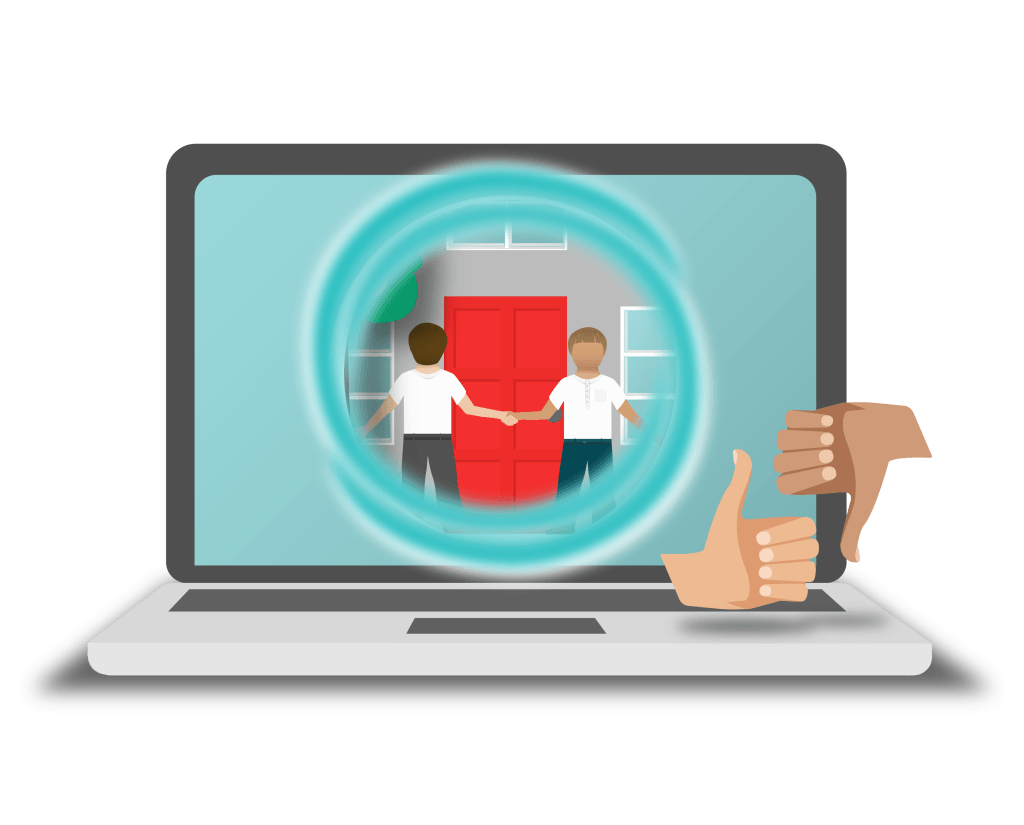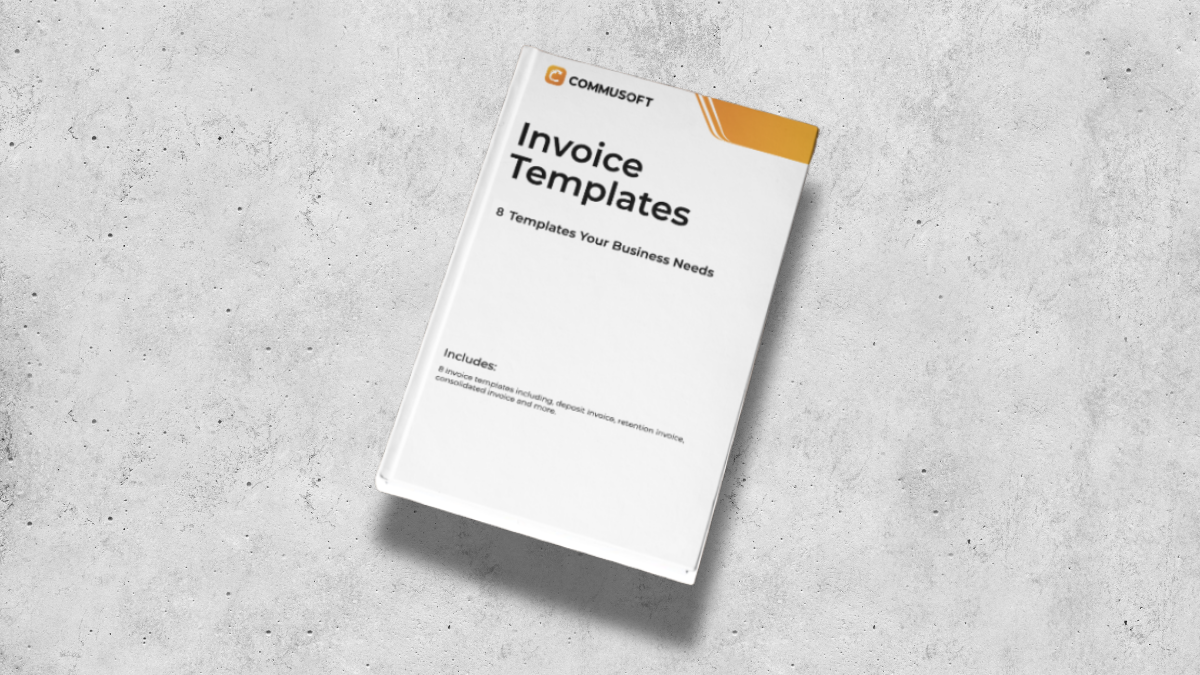How to Build Trust with Customers in 5 Easy Steps
April 14, 2020 | Read: 9 minutes

A particularly great way to get customers to trust you is through your website.
Laying the groundwork to achieve this goal isn’t difficult. Not when you use great tools that are designed to help you make a great first impression.
You may already have a well-established business that provides a great service. You’re making money and have a high first-time fix rate, but how do you make your business stand out?
Earning the trust of your customers can really help to set you apart from your competition, but that means also winning their trust, too. When it comes to new customers, that’s particularly tricky, and then you have to maintain it, too
Below, we take a look at the five steps to explain how to get customers to trust your website and your business!

How to get customers to trust your website in 5 ways:
1. Establish clear lines of communication
The way you communicate with your customers not only shapes the quality of your service, but also how well it’s perceived. If you’re not communicating well with your customers from day one, then you’re not making a memorable first impression.
You need to communicate clearly and accurately.
To do this well, you’ll want to be making use of a customer database. This will provide your staff with a lot of information at their fingertips, including:
- Basic details about each customer (name, address, email, the usual)
- What type of customer are they (private, estate agent, tenant, etc.)
- Their service history
- A list of the appliance/s installed at each property
- The customer’s preferences i.e. is sending a letter best? Or would they prefer email, text, or a phone call? Knowing this can reduce the administrative burden.
It can be tough to strike a balance. Too much communication can seem intrusive or even aggressive and so put them off. But not enough communication, and they’ll go elsewhere.
Customers expect responses to be quick these days, but they don’t want to be overwhelmed, either.
So, first off, if they do make an inquiry you should be sure to respond within 24 hours (but ideally even sooner). An automated response sent by your job management software is a great way to acknowledge their inquiry. It’s far better than having them wait for days.
Communication needs to be clear. Don’t waffle. When information is clear, customers can be confident they’ve been acknowledged.
For example:
Clear lines of communication can help your office staff and engineers operating out in the field, so they can deliver messages quickly and easily via their computers or smart devices. This keeps communication flowing and can prevent jobs from backing up, getting delayed, or being lost altogether.
2. Implement tech solutions
For instance, have you considered an engineer profile portal?
Building trust with customers is about being transparent: customers don’t want to be blindsided by details that weren’t clearly explained beforehand, or receive important notices late, like an unexpected invoice, either.
If you want to be a trustworthy company, then you need to ensure that you’re being as clear as possible, at all times. Using digital tools, crafting the perfect customer journeys, and taking your business down a paperless route is a great way to help you achieve this goal.
Digital trust matters “and many will take their business elsewhere when companies don’t deliver it”.
There are a number of tech-based tools that you can use to make sure you achieve clarity across the board, but one that’s particularly useful is an Engineer Profile Portal.
For customers who require an engineer to visit their home or private residence, it’s an especially welcome feature. After all, even when a scheduled appointment is expected, it can still feel intimidating to not know who exactly will turn up at the address. You might be given a name, but is that enough?
Instead, that’s where an engineer profile portal comes in.

A quick text message or email from your company to the customer can provide them with a link to a web page.
On this page, they can see the engineer’s name, qualifications, professional credentials, and even a smiling photo.
Not only do they get a visual idea of who’ll be helping them out, but they’re also reassured that the engineer (or tradesperson, as the case may be) is appropriately qualified to do the job.
Want to take it up a notch?
If you implement fleet management software alongside an engineer profile portal, you can open yourself up to a technological powerhouse of data that can really elevate the customer journey that you provide.
With trackers, you can provide customers with real-time data that lets them see the engineers’ estimated time of arrival, which obviously benefits your office staff as well.
For one, it saves them time spent trying to track engineers by phone (which can be painful) and can even help with scheduling, or working out optimised routes, as well.
3. Demonstrate your reliability and accountability
To build trust you need to demonstrate that you’re reliable and there are a number of ways to do this.
First and foremost, that means doing the job you’re hired to do. Word of mouth is an effective way to generate a buzz about your business. This can also translate to online reviews, which are essential to use on your website. Featuring reviews is a great way to show accountability, the good and bad (but more on that below).
Speaking more of accountability, it also helps to show customers you’re compliant with laws like GDPR and data protection. By highlighting and listing your compliance with policies like this, it shows you’re following trustworthy and reliable.
In addition, listing methods of communication, such as an office number, email address, or an online booking form will give customers a wide range of options to contact you.
Even listing the names of senior staff or engineers on your website can humanise your business. This can make customers feel comfortable and relate to your business, especially if they’re welcoming people into their homes.
It’s also about behaviour. If you take steps to ensure your staff act responsibly when out on a job. Give guidance on etiquette, arrive promptly, be polite, dress appropriately, tidy up, and be attentive to needs. When your team take pride in their work, customers will take note.
This all becomes easier with the right technology—particularly a customer database. Tasks become more process-oriented and systematic and rely less on your engineers’ memory, or on a confusing paper trail. It’s worth investing in a system that automates as many processes as possible. This way, your team can focus on delivering great a service themselves.
4. Make use of a customer management system
Consider, for a moment, the way you interact with your bank or another service business.
You have certain expectations for how you wish to be treated. You expect:
- Transparency over the fees they charge.
- Accurate and detailed invoices are sent to you in a timely manner.
- To be treated like an individual.
- For the person you speak with, they’re aware of your service history.
- For them to contact you in a timely and responsible manner if circumstances change
- To help you solve or prevent a problem if/when they arise.
The way they meet these expectations isn’t by accident. Large companies invest in IT solutions that help them win and retain customers through high-quality service (ideally).
Customers now expect this service from pretty much any business they interact with, especially if you’re providing a contract to cover your services. If that is the case:
Ensure that your clients fully understand the scope of services, costs, and any other obligations or entitlements. This helps in setting realistic expectations and building trust
Hailey Harris, Business Development Manager, License Lookup
Fortunately, great customer service isn’t only achievable by these big businesses.
The ability to manage your customer’s information is more accessible than ever thanks to excellent, affordable job management software with great customer relationship management systems.
5. Actively request and respond to online reviews
It’s one thing to say that you’re trustworthy and do a good job by talking yourself up on your website, but the real impact comes from customers talking about their experiences.
Feedback can be your golden ticket to success, and getting a great review can be a huge boon for your business. A good review is worth much more than promotional advertising.
This is especially true if you make an effort to actively request, display, and respond to reviews as well. Even a simple “thank you, we’re pleased to hear you enjoyed our service!” shows that you’re engaged with your customers.
Candid responses to concerned (or even frustrated) customers help other prospects see that you care what your customers think of your business and that you actively tackle problems as soon as they arise.
If you look at reviews for gas engineers, plumbers and similar tradespeople on TrustMark’s website and other review sites, like Checkatrade, you’ll find it easy to work out what customers and businesses are focusing on, dealing with, and even how they might tackle positive and negative feedback.
When you can easily record feedback from customers and engineers, you’re far better able to follow the path of continuous improvement and adhere to quality standards set out in certification programmes like ISO9001.
Here’s how to get customers to trust your website (and your business!)
Building trust with your customers isn’t going to be a “one-and-done” task. It’s a continuous process.
However, this doesn’t mean it has to be difficult.
If you follow the tips we’ve outlined above and make an effort to use the digital tools available to you, you’ll not only manage, but thrive at customer service.
Of course, it’s not just about digital tools it’s also about communicating effectively with customers.
This is why we’ve created The Customer Communication Toolkit. It’s designed to help your team engage with customers, save time, and win them over. Download it here!









